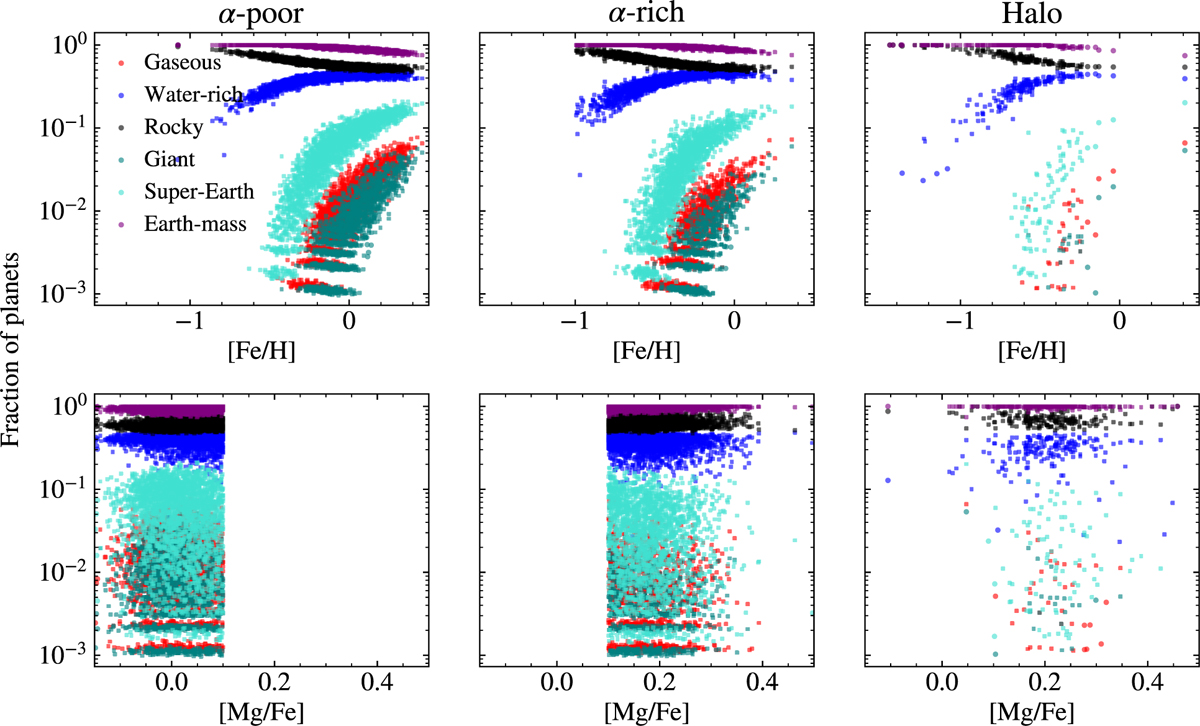Fig. 13

Download original image
Occurrence rates for the different planet categories as a function of [Fe/H] (top row) and [Mg/Fe] (bottom row). The occurrence rates of giant planets increase as expected with [Fe/H], so most of the α-rich stars and almost all of the halo stars form no giant planets due to the overall lower metallicities of those populations. Water-rich planets are common (~50%) around both α-poor and α-rich stars with [Fe/H] > −0.5. There is no strong relation in the fraction of giant planets or super-Earths with [Mg/Fe], although [Mg/Fe]-poor stars are more likely to form more giant planets and super-Earths since they are typically [Fe/H]-rich.
Current usage metrics show cumulative count of Article Views (full-text article views including HTML views, PDF and ePub downloads, according to the available data) and Abstracts Views on Vision4Press platform.
Data correspond to usage on the plateform after 2015. The current usage metrics is available 48-96 hours after online publication and is updated daily on week days.
Initial download of the metrics may take a while.


